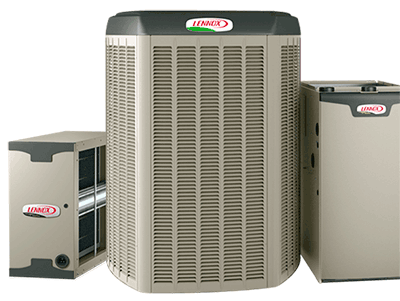Best Practices for Reducing Energy Consumption in Your Home
Sep 14, 2024

In today’s world, reducing energy consumption is more important than ever. Not only does it help you save money on utility bills, but it also contributes to environmental sustainability by lowering your carbon footprint. Homeowners can take various steps to make their homes more energy-efficient, from small changes in daily habits to larger investments in energy-saving technologies. This article outlines the best practices for reducing energy consumption in your home, ensuring a comfortable living environment while also doing your part for the planet.
1. Conduct an Energy Audit
Before making any changes, it’s essential to understand where your home is losing energy. An energy audit helps you identify areas of inefficiency and provides a roadmap for improvements. You can either hire a professional or conduct a simple DIY audit.
Steps to Conduct a DIY Energy Audit
Conducting an energy audit is the first step toward making your home more energy-efficient. By identifying problem areas, you can prioritize which improvements will have the most significant impact on reducing energy consumption. If conducting a DIY energy audit seems overwhelming, consider reaching out to Rinaldi’s handyman services for professional assistance. Our team of experts can conduct a comprehensive energy audit and provide recommendations for improving your home’s efficiency. Contact us today to schedule an appointment and take the first step towards reducing your energy consumption!
2. Improve Insulation and Seal Leaks
Proper insulation and sealing of leaks are crucial for maintaining a consistent indoor temperature, reducing the need for excessive heating or cooling. Insulation keeps the heat in during the winter and out during the summer, while sealing leaks prevents drafts from undermining your HVAC system’s efficiency.
Key Areas to Focus On
Improving insulation and sealing leaks can lead to immediate and noticeable reductions in energy consumption. It also enhances the comfort of your home by eliminating cold drafts and hot spots.
Don’t Hesitate To Reach Out Whenever You Need Repairs
If you encounter insulation problems, it’s always best to consult a professional for help. Our talented team at Rinaldi’s Energy Solutions is here to help you out!
3. Upgrade to Energy-Efficient Appliances
Old, inefficient appliances can be major energy hogs in your home. Upgrading to energy-efficient models can significantly reduce your overall energy consumption. Look for appliances with the ENERGY STAR® label, which indicates they meet strict energy efficiency guidelines set by the U.S. Environmental Protection Agency.
Appliances to Consider Upgrading
Upgrading appliances not only reduces energy consumption but also enhances your home’s overall efficiency and performance.
4. Optimize Heating and Cooling Systems
Heating and cooling account for nearly half of a typical home’s energy usage. Optimizing your HVAC system can lead to significant savings. Regular maintenance, such as changing filters and scheduling professional inspections, ensures your system runs efficiently.
Best Practices for HVAC Optimization
Optimizing your heating and cooling systems not only reduces energy consumption but also extends the lifespan of your equipment and improves indoor air quality.
5. Embrace Renewable Energy Sources
Incorporating renewable energy sources into your home is one of the most impactful ways to reduce energy consumption. Solar panels, wind turbines, and geothermal systems offer sustainable alternatives to traditional energy sources.
Renewable Energy Options for Homeowners
By embracing renewable energy, you can reduce your home’s carbon footprint and contribute to a more sustainable future.
6. Adopt Energy-Saving Habits
Small changes in daily habits can have a big impact on your home’s energy consumption. By adopting energy-saving practices, you can reduce waste and save money.
Simple Energy-Saving Habits
Adopting these habits can lead to noticeable reductions in energy consumption and lower utility bills.
7. Utilize Energy-Efficient Lighting
Lighting accounts for about 10% of a home’s energy usage. Switching to energy-efficient lighting options can lead to substantial energy savings.
Lighting Upgrades to Consider
Switching to energy-efficient lighting is a simple yet effective way to reduce your home’s energy consumption.
8. Upgrade Windows and Doors
Windows and doors play a significant role in a home’s energy efficiency. Upgrading to energy-efficient models can prevent heat loss in the winter and reduce heat gain in the summer, leading to lower energy consumption.
Key Features of Energy-Efficient Windows and Doors
Upgrading windows and doors can enhance your home’s comfort and significantly reduce energy consumption.
The Role of Handyman Services in Reducing Energy Consumption
Implementing these best practices often requires the expertise of a professional handyman. Whether it’s installing insulation, upgrading appliances, or conducting an energy audit, a skilled handyman can help you make the right improvements to reduce energy consumption effectively.
How a Handyman Can Assist
By working with a professional handyman, you can ensure that your energy-saving efforts are both effective and long-lasting.
Conclusion
Reducing energy consumption in your home is a multifaceted approach that involves everything from small daily habits to significant home improvements. By following these best practices, you can lower your utility bills, enhance your home’s comfort, and contribute to environmental sustainability. Remember, a professional handyman can be an invaluable partner in your journey toward a more energy-efficient home. Contact our expert HVAC technicians at Rinaldi’s to start your home’s transformation.
Do You Need HVAC Maintenance Or Repairs?
Contact us for proper installation, maintenance, upkeep, and timely repairs.

